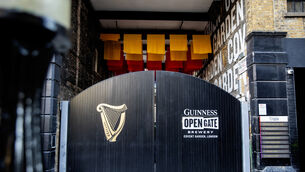ARC heralds shift in attitude towards market
ARC, it has been suggested, could have access to about €3 billion in pension money from Britain, but it is our understanding that figure could be at least €6bn provided banks can be found that are willing to deal along terms acceptable to the three major pension funds that have backed ARC. This development suggests several possibilities.
People will remember that when the Government announced NAMA, it said it was forced to do so because there were no financial institutions willing to take over the distressed assets of the Irish banks at the time, due to the loss of confidence in Irish property and everything associated with it.
The advent of ARC changes all that and appears to have brought about amajor shift in attitude towards the market in Ireland.
It is clear British pension funds see a real opportunity to buy property loans from the overseas banks in Ireland on the basis that they will deliver a good return over time.
The instruction to ARC is to achieve a return of 15% over a five-to-seven-year time span and ARC is pretty confident it can archive this despite the current gloom surrounding Irish property.
Kevin Warren, joint venture partner with Mr Duffy in ARC, has about €2.5bn invested in property funds and has lived to tell the tale. He is confident that ARC will deliver and that the pessimism is overdone.
When British pension funds see Irish property as a good bet over the medium term, it does suggest grounds for optimism.
It suggests too that other funds are likely to target Ireland and if NAMA is quick on its feet it could offload a significant portion of the €77bn debt it is acquiring from the banks to private funds.
At Tuesday’s press conference Mr Duffy raised the prospect of ARC doing business with NAMA down the line, which was a clear indication that the potential for the state’s bad bank to offload debt to other institutions is a logical development of what ARC has already flagged.
If confidence grows in the Irish property sector and more foreign funds target this market, the outlook for NAMA and for the Irish taxpayer could change dramatically.
But we can’t rush our fences. Controversy still surrounds the bad bank and deep-seated fears persist that the Government’s proposal is simply a bailout of the banks that lacked integrity and ended up being destroyed by their own greed.
Even if that was the case, the dilemma remains and a major fear expressed by Fine Gael is that the proposed remedy will not deliver desperately needed loans to the banks’ consumers.
Signs are emerging on that front that the Finance Minister is prepared to act if he does not see a return to bank lending, which is essential if the economy is to get back on its feet.
Much has been made of this economy getting back to export-led growth.
Signs of that happening are already starting to emerge and the balance of payments should be in surplus next year.
That of itself will not answer all our problems because those with long enough memories know that in the 1980s, when Irish exports were booming, the country was also exporting about 80,000 people a year as there were no jobs due to a lack of internal demand at home.
That threat has returned with the drying-up of credit.
In effect, if the banks fail to start lending then the whole NAMA exercise will have been wasted, even if the state does not lose a cent in the process.















